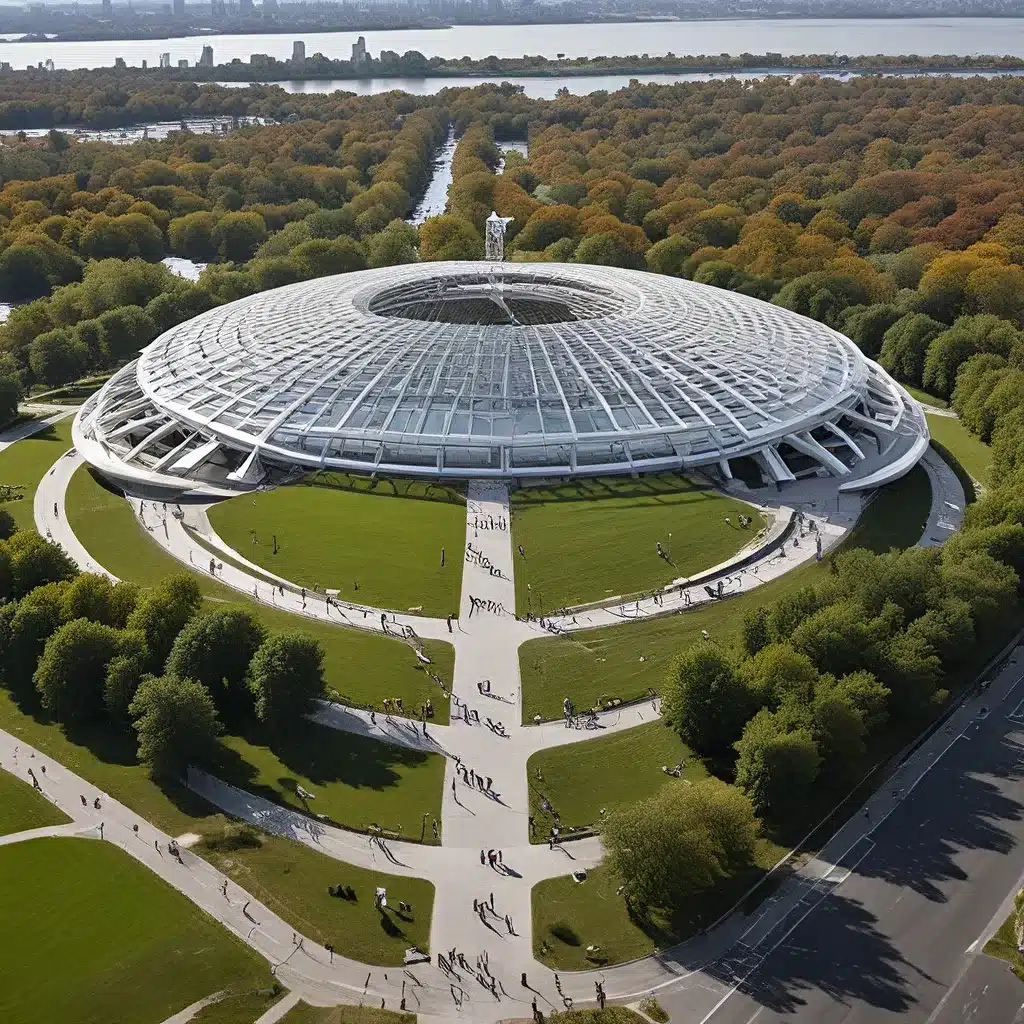
The Birth of an Iconic Venue
Flushing Meadows-Corona Park, located in the borough of Queens, New York, is home to one of the world’s most iconic sports and entertainment venues: the USTA Billie Jean King National Tennis Center. This expansive complex, which hosts the annual U.S. Open Tennis Championships, has a rich history that is deeply intertwined with the evolution of the city and the sport of tennis itself.
The origins of the USTA Billie Jean King National Tennis Center can be traced back to the 1939 New York World’s Fair, which transformed the once-barren Flushing Meadows into a vibrant and dynamic public space. The park was designed by renowned landscape architect Robert Moses, who envisioned it as a central hub for recreational activities and cultural events.
In the years following the World’s Fair, the site continued to evolve, with the construction of various sports facilities, including the USTA National Tennis Center, which was completed in 1978. This state-of-the-art complex was designed to host the U.S. Open, which had outgrown its previous home at the West Side Tennis Club in Forest Hills, Queens.
The Architectural Masterpiece
The USTA Billie Jean King National Tennis Center is a sprawling complex that covers over 42 acres, making it one of the largest tennis facilities in the world. The center’s architectural design is a masterful blend of functionality and aesthetics, with each element carefully crafted to enhance the player and spectator experience.
One of the most distinctive features of the complex is the Arthur Ashe Stadium, the largest tennis stadium in the world with a seating capacity of over 23,000. Designed by the acclaimed architectural firm of Rossetti Associates, the stadium’s striking appearance is characterized by its massive, undulating roof and sleek, contemporary lines. The roof, which was added in 1997, is a technological marvel, capable of closing in just 7 minutes to protect players and spectators from inclement weather.
In addition to the iconic Arthur Ashe Stadium, the USTA Billie Jean King National Tennis Center boasts several other world-class facilities, including the Louis Armstrong Stadium, the Grandstand, and a vast network of practice courts and support structures. Each of these venues has been designed to optimize the viewing experience, with carefully considered sightlines, acoustics, and amenities.
The Evolution of the U.S. Open
The USTA Billie Jean King National Tennis Center has played a pivotal role in the evolution of the U.S. Open, transforming it into one of the most prestigious and thrilling events in the world of tennis. Since its inauguration in 1978, the center has hosted countless memorable matches, including some of the sport’s most iconic moments.
One of the most significant events in the history of the U.S. Open was the 1973 “Battle of the Sexes” match between Billie Jean King and Bobby Riggs. This highly publicized and politically charged exhibition match, which King won convincingly, helped to raise the profile of women’s tennis and, ultimately, led to the renaming of the complex in her honor.
Over the years, the U.S. Open has continued to evolve, with the USTA Billie Jean King National Tennis Center adapting to meet the changing needs of the sport and its spectators. In 2018, the complex unveiled a brand-new retractable roof over the Arthur Ashe Stadium, further enhancing the tournament’s ability to withstand inclement weather and provide an uninterrupted viewing experience.
The Impact on the Community
The USTA Billie Jean King National Tennis Center is not just a world-class sports venue; it is also a vital community asset that has had a profound impact on the local area. Through its various outreach and educational programs, the center has helped to promote the sport of tennis and inspire the next generation of players.
One of the center’s most significant initiatives is the USTA Serves program, which provides underserved children and families with access to tennis and education resources. This program aims to use the power of the sport to foster personal growth, encourage healthy lifestyles, and create opportunities for those who might not otherwise have access to such resources.
The USTA Billie Jean King National Tennis Center also hosts a variety of community events and public programs throughout the year, from free tennis clinics to cultural festivals. These initiatives have helped to strengthen the bond between the center and the surrounding neighborhoods, making it a beloved and integral part of the Flushing Meadows-Corona Park community.
Conclusion: A Legacy of Excellence
The USTA Billie Jean King National Tennis Center is a true architectural and sports icon, a testament to the power of vision, innovation, and community engagement. From its humble beginnings as part of the 1939 New York World’s Fair to its current status as the home of one of the most prestigious tennis tournaments in the world, the center has continuously evolved to meet the needs of the sport and its fans.
As the U.S. Open continues to captivate audiences around the globe, the USTA Billie Jean King National Tennis Center will undoubtedly remain a centerpiece of the event, a symbol of the sport’s enduring legacy and the unwavering dedication of those who have worked to make it a reality. Through its ongoing commitment to excellence, community outreach, and the pursuit of innovation, this iconic venue will undoubtedly continue to inspire and captivate for generations to come.

